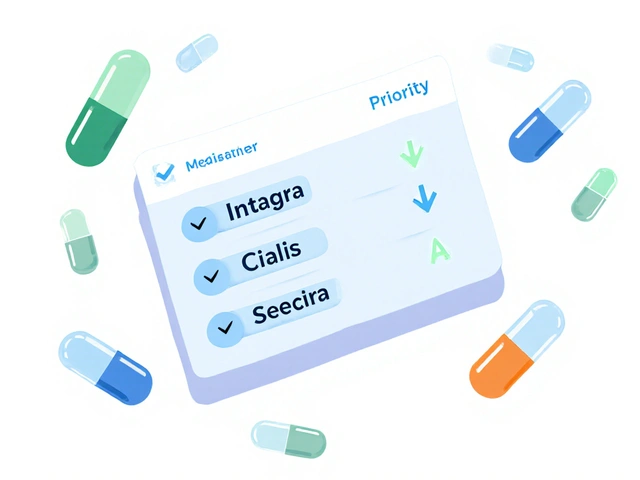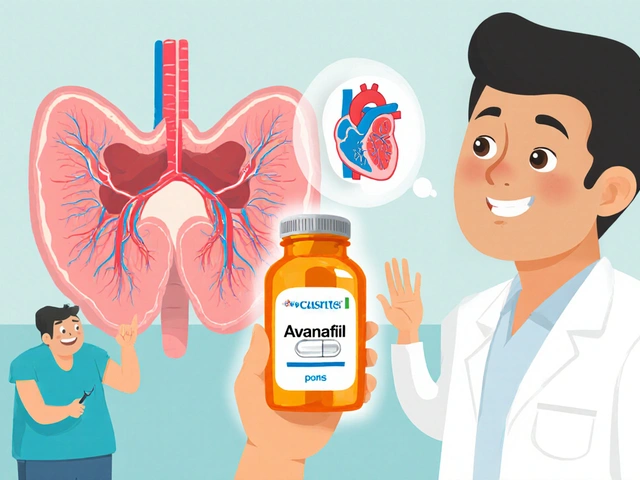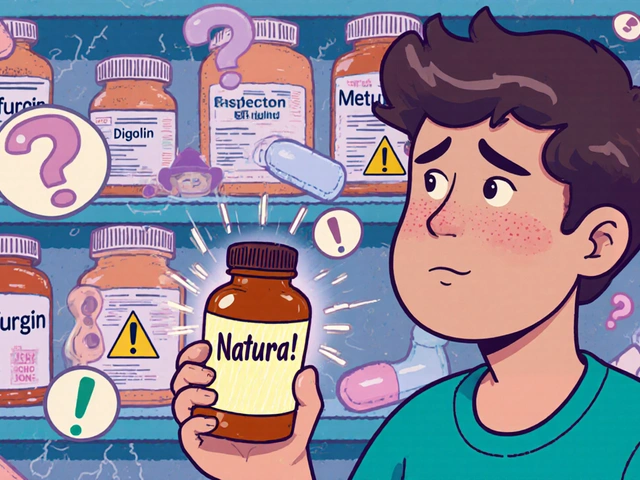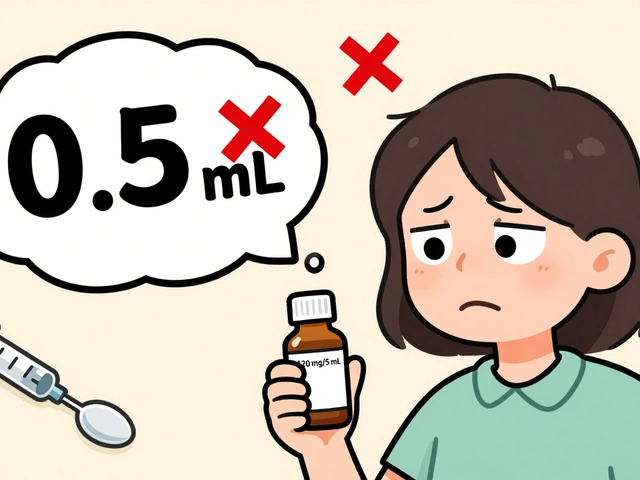Urinary tract spasm is a sudden, involuntary contraction of the muscles lining the urinary tract that causes sharp pelvic pain, urgency, and sometimes blood in the urine. When the spasms become frequent, they can disrupt work, sleep, and social life. Most people feel uneasy about bringing the topic up because the symptoms feel “embarrassing” or because they’re not sure which details matter to a clinician. This guide walks you through every step - from recognizing the warning signs to preparing a concise, confident conversation that gets you the care you need.
Recognizing the Signs That Warrant a Visit
Before you sit down with your physician, be sure the pattern fits a typical urinary tract spasm presentation rather than an isolated bladder‑related hiccup. Common red flags include:
- Recurrent sharp pain that spikes every few hours or after specific triggers (caffeine, cold drinks, sexual activity).
- Urgent need to urinate with only a few drops passed.
- Blood‑tinged urine (hematuria) that appears without an infection.
- Symptoms persisting longer than two weeks despite lifestyle tweaks.
If you notice any of these, it’s time to schedule an appointment.
Preparing for the Appointment
Doctors have limited time, so a well‑organized note can make all the difference. Gather the following information:
- Symptom journal: Record date, time, intensity (use a Pain scale from 0‑10), possible triggers, and any over‑the‑counter remedies you tried.
- Medical history: Prior urinary tract infections (UTIs), kidney stones, or pelvic surgeries.
- Current medications: Prescription drugs, supplements, and herbal products.
- Family history: Any relatives with bladder disorders or kidney disease.
Having this ready lets you stay focused and prevents you from forgetting crucial details during the visit.
Key Questions to Ask Your Doctor
Proactive patients often get better outcomes because they steer the conversation toward actionable information. Keep a printed copy of these questions:
- What could be causing my spasms?
- Do I need a urinalysis to rule out infection or blood??
- Are there specific antispasmodic medications that work best for my situation??
- What lifestyle changes (diet, fluid intake, exercise) could reduce the frequency?
- When should I call emergency services - for example, if I develop fever or severe pain?
Having a list prevents you from feeling rushed and ensures you leave the office with a clear plan.
Describing Pain and Frequency Effectively
Doctors rely on descriptive language to differentiate a spasm from other urinary issues. Use these tips:
- Quantify intensity with the 0‑10 Pain scale you tracked.
- Note the exact location (lower abdomen, pelvic floor, flank).
- Specify the duration of each episode (seconds, minutes, hours).
- Identify patterns - “every morning after coffee” or “after intercourse”.
Clear, objective data helps your clinician decide whether a simple lifestyle tweak or a prescription is warranted.

Discussing Treatment Options
Most physicians start with the least invasive approach. Typical steps include:
- Eliminate obvious irritants (caffeine, alcohol, artificial sweeteners).
- Hydration strategy - aim for 2‑3L of water daily, split into small sips.
- Pelvic floor physical therapy to retrain muscle coordination.
- If symptoms persist, consider antispasmodic medication.
Below is a quick comparison of the three most commonly prescribed antispasmodics.
| Medication | Mechanism | Typical Dose | Common Side Effects | Key Contra‑indications |
|---|---|---|---|---|
| Oxybutynin | Anticholinergic - relaxes bladder muscle | 5‑10mg PO BID | Dry mouth, constipation, blurred vision | Glaucoma, uncontrolled urinary retention |
| Tolterodine | Selective muscarinic antagonist | 2mg PO daily (extended‑release) | Drowsiness, dry mouth, headache | Severe liver disease, urinary obstruction |
| Flavoxate | Direct smooth‑muscle relaxant | 200‑400mg PO TID | Nausea, dizziness, fatigue | Pregnancy, severe cardiac disease |
Ask your doctor which option aligns best with your medical history and daily routine. Some patients start low‑dose and titrate up to minimize side effects.
Over‑the‑Counter Remedies and Lifestyle Factors
Even if you end up on prescription meds, OTC tools can soften the blow. Consider these evidence‑backed options:
- Magnesium supplements: 200‑400mg nightly may calm muscle excitability (supported by a 2023 renal health study).
- Alpha‑blockers (e.g., over‑the‑counter herbals like saw palmetto): modestly ease urinary flow in some women.
- Heat therapy: a warm sit‑z bath for 10minutes can relax pelvic muscles during an acute spasm.
When you discuss these with your doctor, be sure to mention dosage and frequency so they can spot potential interactions.
Follow‑Up and When to Seek Urgent Care
After your initial visit, schedule a follow‑up within 2‑4 weeks to evaluate response. Keep track of any new or worsening signs:
- Fever over 38°C (100.4°F) - could indicate an infection.
- Sudden inability to urinate - possible acute urinary retention.
- Severe flank pain combined with blood in urine - rule out kidney stones.
If any of these appear, go to the nearest emergency department; delay can lead to complications.
Related Topics to Explore Next
Understanding urinary tract spasms opens the door to broader urological health. You might also want to read about:
- Pelvic floor physical therapy techniques for chronic bladder pain.
- How hormonal changes during menopause affect urinary symptoms.
- Differences between bladder spasms and kidney stone pain.
- Diagnostic value of a cystoscopy versus a simple urinalysis.
These subjects deepen your knowledge and empower you to have richer conversations with your healthcare team.

Frequently Asked Questions
What exactly triggers a urinary tract spasm?
Common triggers include caffeine, alcohol, spicy foods, cold beverages, stress, and certain medications that irritate the bladder lining. In some cases, hormonal fluctuations or pelvic floor tension can also set off involuntary muscle contractions.
Do I need a urinalysis for every episode?
A urinalysis is recommended the first time you see a doctor for spasms. It helps rule out infection, blood, or crystals. If the test is normal and symptoms persist, your clinician may repeat it later or move on to imaging studies.
Are antispasmodic medications safe for long‑term use?
Most antispasmodics are safe when taken as prescribed. However, they can cause dry mouth, constipation, or dizziness, especially in older adults. Regular check‑ins allow the doctor to adjust doses or switch drugs if side effects become problematic.
Can lifestyle changes alone cure my spasms?
For many, eliminating irritants (caffeine, artificial sweeteners), staying well‑hydrated, and practicing pelvic floor exercises dramatically shrink the frequency. If symptoms linger despite these measures, medication or physical therapy usually provides the next level of relief.
When is it an emergency?
Seek urgent care if you develop a high fever, severe flank pain with blood in the urine, or an abrupt inability to urinate. These signs can indicate infection, kidney stones, or acute urinary retention, which need prompt treatment.






Brian Perry
September 23, 2025 AT 22:21bro i had a spasm during a zoom meeting and just screamed into my pillow like a banshee lmao
Michael Bene
September 24, 2025 AT 17:15Okay but let’s be real - if you’re not tracking your bladder spasms like a damn NASA mission with pain scales and trigger logs, you’re doing it wrong. I’ve got a spreadsheet with columns for coffee intake, stress levels, and whether my cat sat on my lap. One time I realized my spasms spiked every time I wore jeans. Turns out, denim is a pelvic enemy. Who knew? Also, oxybutynin made me feel like a robot with a dry mouth and zero emotional range. I switched to tolterodine and now I can actually sleep. And yes, I’ve emailed my doctor this entire comment. He replied with a thumbs-up emoji. Progress.
Chris Jahmil Ignacio
September 26, 2025 AT 03:06why do doctors always act like this is some new weird thing?? i had this since i was 14 and they just told me to drink more water. now im 32 and still getting the same bs. also who the hell is flavoxate?? sounds like a drug from a 90s sci fi movie
Paul Corcoran
September 27, 2025 AT 04:43Hey everyone - I’ve been where you are. Felt embarrassed, felt alone, felt like no one understood. But here’s the truth: your bladder doesn’t care if you’re shy. It just wants to work right. I started journaling like the post says - and honestly? It felt silly at first. But after three weeks, I saw patterns. No more caffeine after 2pm? Fewer spasms. Warm bath before bed? Calmer nights. And my PT told me pelvic floor exercises aren’t just for postpartum people - they’re for anyone with a body. You’re not broken. You’re just under-informed. And you’re not alone. Keep going.
Tom Costello
September 28, 2025 AT 04:19This is one of the most thoughtful, practical guides I’ve seen on this topic. Kudos to the author. I’m from the U.S. but my mom’s from India and she had similar issues - she refused to talk about it until she found a female urologist who just listened. No judgment. No rushed appointments. Just questions. That changed everything. If you’re reading this and feeling awkward - it’s okay. But don’t let embarrassment cost you your quality of life. You deserve care.
kelly mckeown
September 28, 2025 AT 14:34i read this and cried a little. not because im sad, but because i finally feel seen. i thought i was just being dramatic. turns out i had a journal for 18 months and never showed it to anyone. gonna print this out and take it to my doc next week. thank you.
Siddharth Notani
September 28, 2025 AT 14:42Excellent guide. In India, this topic is rarely discussed. I shared this with my sister who has had similar symptoms for years. She is now scheduling an appointment. Thank you for normalizing this. Magnesium 400mg at night - yes. I’ve been using it for six months. Minimal side effects. Highly recommended.
Cyndy Gregoria
September 28, 2025 AT 15:33STOP letting doctors gaslight you. If they say ‘it’s just stress’ or ‘drink more water’ and walk away - get a new doctor. I did. Found a urologist who actually looked at my journal. Turned out I had interstitial cystitis. Took two years. But now I’m on a low-dose amitriptyline and I can go out without planning my life around a bathroom. You are not crazy. You are not weak. You are a warrior.
Akash Sharma
September 28, 2025 AT 18:28I’ve been reading up on this for months now. I think the real issue isn’t just the spasms - it’s the lack of standardized diagnostic criteria. Most doctors rely on symptom reports alone, but there’s zero consensus on what constitutes ‘frequent’ or ‘severe’. I’ve seen papers suggesting pelvic floor EMG should be standard for recurrent cases, but insurance won’t cover it unless you’ve tried five OTC remedies first. Also, the table comparing antispasmodics is accurate, but it doesn’t mention that tolterodine ER is often misprescribed as immediate-release - which causes more side effects. Always ask for the extended-release version. And yes, I’ve read every study listed in the references. Twice.
Justin Hampton
September 29, 2025 AT 04:12Why are we all just accepting this? Who benefits from making people feel guilty about their bladders? Big Pharma. The whole system is designed to keep you medicated and quiet. They don’t want you to know that pelvic floor dysfunction is often caused by sitting too much and breathing wrong. You don’t need drugs. You need to stop slouching. Do diaphragmatic breathing. Get a standing desk. That’s it. This whole guide is just another way to sell pills.
Stacy Natanielle
September 30, 2025 AT 23:48So… you’re telling me I’ve been taking magnesium for 6 months and it’s actually working? 😱 I thought it was just placebo because I also started drinking chamomile tea and doing yoga. Also, I cried when I read ‘you’re not alone’ - because I’ve been hiding this from my partner. I think I’m ready to talk now. 🤍
dylan dowsett
October 2, 2025 AT 15:06Wow. This is so… clinical. Like a textbook. Where’s the emotion? Where’s the struggle? I’ve had this for 12 years. I’ve been fired from jobs because I had to leave mid-meeting. I’ve cried in public bathrooms. I’ve been told I’m ‘overreacting’. This guide feels like a corporate brochure. Where’s the real story? The shame? The isolation? The fact that your husband thinks you’re ‘being dramatic’? You need more than a spreadsheet. You need someone to hold your hand.
Chad Kennedy
October 4, 2025 AT 04:51why is everyone so into this? i just take ibuprofen and deal with it. why do you need a whole guide? also who even cares about flavoxate? sounds like a brand of yogurt.
Sandridge Nelia
October 5, 2025 AT 06:35I’m a nurse and I’ve seen so many patients suffer in silence because they’re too embarrassed to speak up. This guide is perfect - clear, compassionate, and practical. I’ve printed copies for my clinic. If you’re reading this and thinking ‘I don’t want to bother my doctor’ - please, just go. Your bladder doesn’t care if you’re shy. But your future self will thank you.
Susan Haboustak
October 6, 2025 AT 10:00Let’s be honest - most of these ‘lifestyle changes’ are just lazy advice. You think drinking water will fix a neurological muscle disorder? You think magnesium is a cure? This is a Band-Aid on a broken leg. And the ‘antispasmodic’ table? It’s misleading. Oxybutynin causes cognitive decline in the elderly - yet they prescribe it to grandmas like it’s aspirin. This guide is dangerously oversimplified. If you’re not getting a cystoscopy or urodynamics, you’re not getting real care.
Pooja Surnar
October 7, 2025 AT 02:55u all are so dramatic. i had this once and i just held it in for 3 hours. now i dont even think about it. why are you all making this a thing? its just pee. stop being so sensitive. also flavoxate? never heard of it. probably fake medicine.
Colin Mitchell
October 7, 2025 AT 08:51Just wanted to say - if you’re reading this and you’re scared to talk to your doctor, I get it. I was there. But the first time I said the words out loud - ‘I get these sharp pains when I pee’ - my doctor didn’t blink. She said, ‘Tell me more.’ That’s all you need. Not perfection. Not a spreadsheet. Just honesty. You’ve got this.